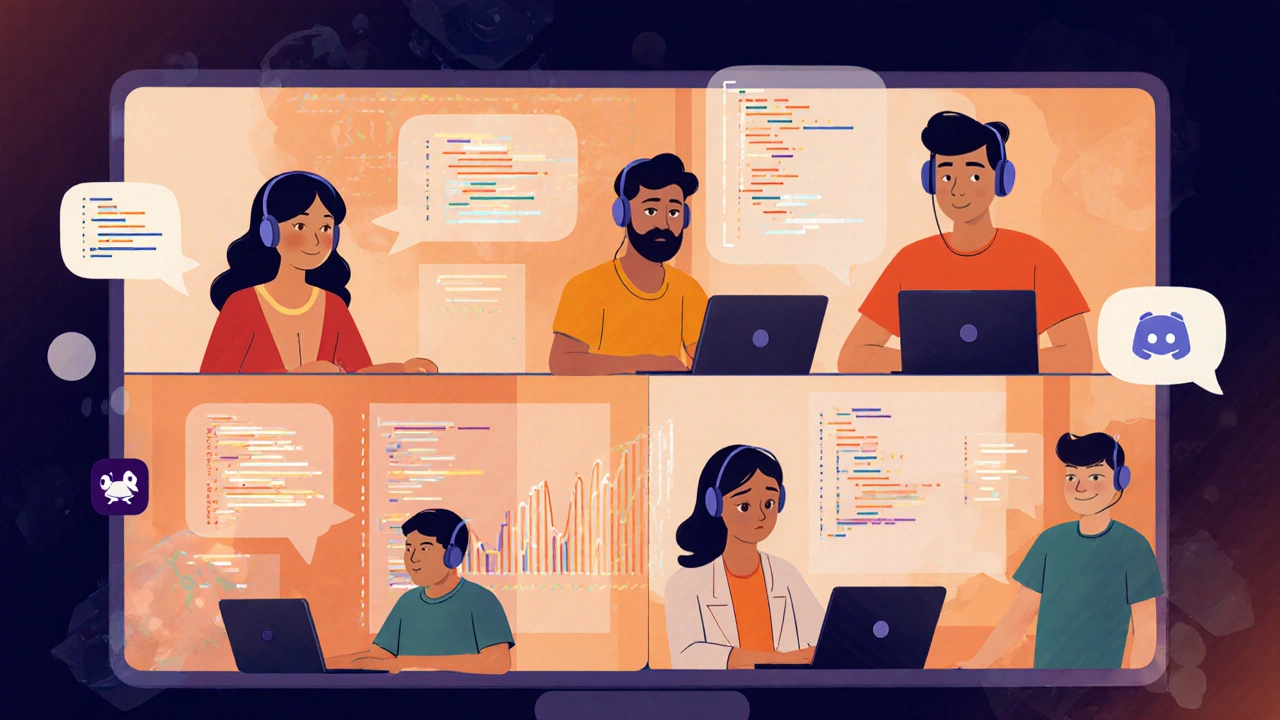Self-Taught Programming Path Planner
Step 1: Choose Your Starting Language
Select the programming language you'd like to begin with. Each language has unique strengths and learning curves.
Python
Great for beginners, versatile for web, data science, and automation.
Recommended for absolute beginnersJavaScript
Essential for web development and increasingly popular on the backend.
Perfect for web developersRuby
Elegant syntax, great for web applications with Rails framework.
Good for web app developmentStep 2: Track Your Learning Progress
Complete these milestones to build a strong foundation in programming:
0% complete
Foundations
Syntax, variables, loops, and simple I/O
Projects
Build 3 small projects (CLI, web page, API client)
Data Structures
Arrays, linked lists, sorting, and searching
Version Control
Learn Git and host on GitHub
Step 3: Recommended Resources
Based on your selected language, here are some recommended free resources:
- freeCodeCamp Free
- MDN Web Docs Free
- Python.org Official Tutorial Free
Your Learning Plan Summary
Select a language to generate your personalized learning plan.
Ever wondered if self taught coding is actually doable? You’re not alone. Thousands of people have swapped lecture halls for laptops and built real‑world apps without ever stepping into a classroom. This guide breaks down exactly how you can start, what tools you’ll need, and how to keep the momentum going.
Is Self‑Taught Coding Realistic?
Self‑taught coding is a learning path where individuals acquire programming skills independently, using online resources, books, and community support instead of formal education. The idea sounds intimidating, but the statistics say otherwise. According to a 2024 survey by the International Association of Computer Science Educators, 68% of developers who entered the field within the last five years started out as self‑learners.
Why does it work? Modern programming ecosystems are built around open‑source contributions, extensive documentation, and interactive tutorials that are designed for beginners. The barrier to entry has dropped dramatically-today you can spin up a development environment in seconds with a free IDE and start writing code that runs on the web.
Pick a Language and a Toolchain
Choosing the right language is the first concrete decision you’ll make. Here are three beginner‑friendly options, each paired with a free, widely used IDE:
- Python is a high‑level, interpreted language known for its readable syntax and versatility across web development, data science, and automation. Paired with Visual Studio Code (VS Code), you get a lightweight editor with built‑in linting, debugging, and a massive extension marketplace.
- JavaScript is the language of the web, essential for building interactive front‑end experiences and increasingly popular on the server side via Node.js. VS Code again shines with live preview extensions that update your browser instantly.
- Ruby is a dynamic language praised for its elegant syntax, often used with the Rails framework for rapid web app development. The RubyMine community edition offers integrated testing and refactoring tools.
Whichever language you pick, the goal is to master the fundamentals-variables, control flow, functions, and basic data structures-before moving on to more complex topics.
Design a Structured Learning Roadmap
The biggest mistake self‑learners make is wandering aimlessly through countless tutorials. A roadmap turns a chaotic learning journey into a series of achievable milestones.
- Foundations (Weeks1‑4): Complete a beginner’s course that covers syntax, variables, loops, and simple I/O.
- Project‑Based Learning (Weeks5‑12): Build three small projects-one CLI tool, one web page, and one API client-to apply the concepts you’ve just learned.
- Data Structures & Algorithms (Months3‑4): Tackle arrays, linked lists, sorting, and searching. Use visualizers like VisuAlgo to see how each algorithm works under the hood.
- Version Control (Month5): Learn Git and host your code on GitHub. This not only backs up your work but also creates a public portfolio.
- Specialization (Months6‑9): Choose a domain-web development, data analysis, mobile apps-and dive deeper with focused tutorials and real‑world projects.
- Portfolio & Certification (Months10‑12): Polish your best projects, write clear READMEs, and consider a recognized credential like the freeCodeCamp Full‑Stack Certification.
Stick to a weekly schedule, track your progress in a spreadsheet, and treat each milestone like a mini‑exam.
Best Free and Low‑Cost Resources (Comparison Table)
| Platform | Cost | Interactive Labs | Project Focus | Certification |
|---|---|---|---|---|
| freeCodeCamp | Free | Yes (in‑browser IDE) | High (10+ certified projects) | Free certificates |
| Codecademy | $39.99/month | Yes (step‑by‑step code panels) | Medium (guided projects) | Paid certificates |
| Coursera | Free audit / $49‑$79 per course | No (video + quizzes) | Low (optional capstone) | University‑issued certificates |
| Udemy | $10‑$20 (sale price) | Varies by instructor | Varies (many project‑based courses) | None (completion badge only) |
For total beginners, freeCodeCamp’s hands‑on approach tends to produce the fastest results. If you prefer a more structured curriculum with video explanations, Codecademy is a solid paid upgrade.
Join Communities and Get Real‑World Feedback
Programming is a social activity. Even if you study alone, you’ll need places to ask questions, share code, and receive critique.
- Stack Overflow remains the go‑to Q&A site. Use the
[self‑learning]tag to signal that you’re a newcomer. - GitHub lets you fork open‑source projects. Contributing a small bug fix or documentation improvement can boost confidence.
- Discord and Slack programming channels provide real‑time chat with peers, mentor‑style feedback, and regular coding challenges.
Schedule a weekly “code‑review” with a community member. Even a 15‑minute session can reveal hidden bugs and teach you new idioms.
Common Pitfalls and How to Dodge Them
Self‑learning works best when you anticipate the obstacles that trip up most beginners:
- Procrastination. Treat coding like a job-set a daily start‑time, use the Pomodoro technique, and log hours in a tracker.
- Shallow learning. Don’t finish a tutorial without building something from scratch. Re‑implement the same concept in a different language to cement understanding.
- Skipping fundamentals. It’s tempting to jump to React or Django, but without a solid grasp of functions and data structures you’ll struggle later.
- Isolation. Solo study can feel lonely. Join a study group, attend local meetups (e.g., Birmingham Python User Group), or pair‑program online.
- Fear of failure. Debugging is a learning loop. Embrace error messages as clues rather than setbacks.

Measure Progress and Know When to Level Up
Tracking outcomes helps you decide when it’s time to look for a formal credential or a junior position.
- Portfolio checklist. Include at least three polished projects: one front‑end app, one back‑end API, and one data‑processing script.
- Code quality. Run linters (e.g., ESLint for JavaScript, flake8 for Python) and aim for zero high‑severity warnings.
- Interview readiness. Practice the “Whiteboard” style algorithm questions on sites like LeetCode for 30‑minute sessions.
- Certification relevance. If you’ve completed the freeCodeCamp Full‑Stack Certification or Coursera’s Google IT Automation with Python, add them to your LinkedIn profile.
When you can comfortably discuss your projects, explain your code choices, and solve typical interview puzzles, you’re ready to apply for junior developer roles or freelance gigs.
Key Takeaways
- Self‑taught coding is a proven path; most developers today started on their own.
- Start with a beginner-friendly language and a free IDE like VS Code.
- Follow a structured roadmap: basics → projects → algorithms → version control → specialization.
- Leverage free platforms (freeCodeCamp, GitHub) and community hubs (Stack Overflow, Discord).
- Track progress with a portfolio, code quality tools, and optional certifications before job hunting.
Frequently Asked Questions
Can I become a professional developer without a degree?
Yes. Companies increasingly value demonstrable skills, a solid portfolio, and real‑world contributions over formal credentials. A self‑taught path complemented by certifications and open‑source work can land you junior or even mid‑level roles.
How much time should I dedicate each week?
Aim for at least 10‑15hours spread across 5‑6 days. Consistency beats marathon sessions; short daily practice helps retain concepts and builds a habit.
Which language should I learn first?
Python is often recommended for absolute beginners because of its readable syntax and broad applicability. If your goal is web development, JavaScript is essential; for mobile apps, consider Kotlin (Android) or Swift (iOS).
Do I need a certification to get hired?
Not strictly, but certifications like freeCodeCamp’s Full‑Stack or Coursera’s Google IT Automation can validate your skills to recruiters and fill gaps in a self‑made resume.
How can I stay motivated during tough weeks?
Break large goals into tiny, achievable tasks. Celebrate finishing a small project, share progress on social media, and pair‑program with a friend to keep accountability high.
